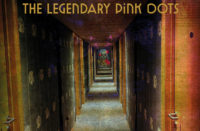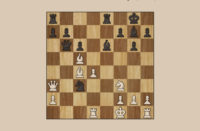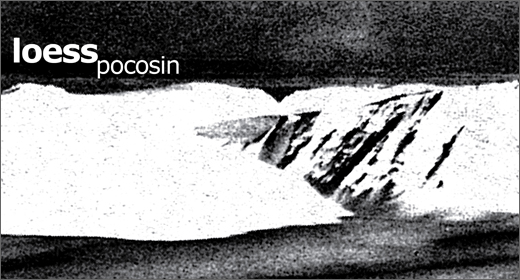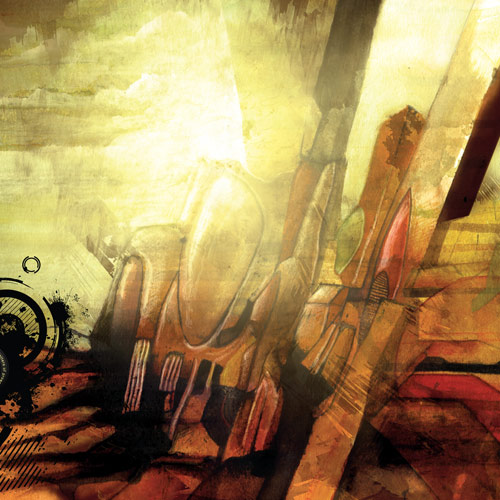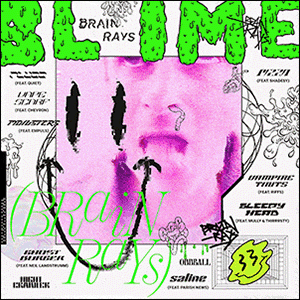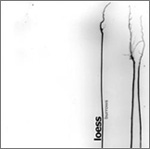 Loess :: Burrows (Listen & Purchase
Loess :: Burrows (Listen & Purchase)
The arrival of Burrows, an archaeology of Loess spanning 2000-2008, is salutary. It’s not just that Clay Emerson and Ian Pullman’s project has been around virtually the whole post-millenial decade, and the shock of realisation of time passed, but because in that time we’ve seen ‘IDM’ decline from a burgeoning area of musical endeavour to an almost marginal activity hardly deemed worthy of serious attention – effaced by the onward march of Dubstep and Mnml and its conquest of a fast and fickle intelligent dance demographic. But this assemblage, mixing rarities and reworkings with new and unreleased material, stands as a testament to the strength of the most skilful and less generic of practitoners in the field, whether it be called IDM, ELM, EDM, or, vacuously, Ambient. Loess show that with dedication to a sound-vision such music is sufficiently robust to resist the vicissitudes of Flavour-of-the-Month sub-genre shifts. Meanwhile another veteran of similar vintage, Proem’s Richard Bailey, is cannily coopted by the Loess lads to join their re-launched label ship. In his case he’s coaxed into delivering something of a departure from the sound of his back catalogue.
A brand of organic electronica, with a woozy beat sensibility and smeared atmospheres, has tended to situate Loess as low profile cousins to the Merck/n5md (pre- not post-) fraternity, as well as the UK psychedelic-ambient-electro tradition represented most obviously by the signifier ‘BoC’; the likes of “Spetaelska” and “Nomon” respectively illustrate this, manifesting as a doleful form of ambient/dub/chill, that’s at once all and none of those three elements; witness the former’s clanking crawl punctuated by soft implosions like muffled thunder, its melodic overlay like a warped music box in an slow-mo hip-hop ooze. Openers “Lull” and “Schoen” meld detuned and filtered keys to sunblind hip-hop remotions with an oblique patter of electro-industrial crepitus. “Troper” – remixing Gridlock – hosts artful harmonic interplay between -again – bass and sounding metals, fibrous funk pulses twitching through it. “Bud” – retooling Quench – is a study in dub methodology, setting reverb-laden slow-mo atmo against a freeze-dried tap-beat. “Nyckel” – a Helios reform – is different agaian, with a peculiar stretchy almost Arab-esque quality to its queasy figure. “Thresh” is a bass-fuelled electroglide in blue – a barely three-minute model of how kinetic and filmic can be symbiotic. The new tracks are as resonant as the old, “Fascine” and “Selkuth” both stately drifts through flickering elegiac motifs, borrowing from dub for motion against which to project emotion – moods of loss and removal – with an exquisite delicacy imbued with a fine sense of the poetics of melancholy. Loess music is constantly characterised by an ear for the small gesture, for the finer points of faded and abraded texture, and a well-turned beat, shunning the plug-in solipsism and ADD-tinged mentalism of much late-period bedroom-electronicists for something beyond. Burrows is among this year’s finest electronic listening music. It’s IDM, Jim, but not as we know it. Loess is more.
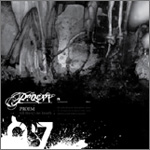 Proem :: Till There’s No Breath (Listen & Purchase
Proem :: Till There’s No Breath (Listen & Purchase)
One of the U.S.’s most savvy IDM stalwarts, Richard Bailey deals with encroaching obsolescence by jumping on the Dark Ambient bandwagon – well, not so much a bandwagon, more a heavy draped cart pulled by a black steed. Yes, it’s all gone ‘Dark’ these days in electronica – all the way from Type to Tympanik to Tectonic. And, to be fair, this is not totally new Proem territory, 2004’s Darker Still having lurked in beat-depleted shadows, but Till There’s No Breath is even more of a retreat from the slick digital crunch of his post-‘ambient techno’ into a more sonically exploratory zone of murky drift – a sound he dubs ‘sleepcore.’ Troubling track titles – “A Skin That Burns,” “Faceeater,” “Deadplate,” “Dull Throbbing” – reinforce the vaguely malefic air. But it’s no horror-show gloom-fest, most tracks inhabiting a realm that leavens the sombre slow falls inward of a Lustmord or Lull (cf. the title track) with the more ambiguous drift of an Eno or Steve Roach (cf. “Coil in Small Field”), and a hint of Hecq’s neo-gothic as on that artist’s similarly flavoured Night Falls). What distinguishes Till There’s No Breath from the “dark ambient” hordes is its subtlety, and an expert sonic architecture evoking something wicked that this way has come through a play of signifiers removed from actual signifieds – somewhat akin to the horror film that’s more about the stylistics than the content of horror. A seamless stream of synth-seep, string-bleed, and unidentified sounding objects steeped in reverb worship spool out an involving representation of vaporous nocturnality, till “Hope Is Great But We Need Caffeine” brings the signs of light. Hopefully not the last night of Proem’s.
Both releases are out now on Nonresponse.







